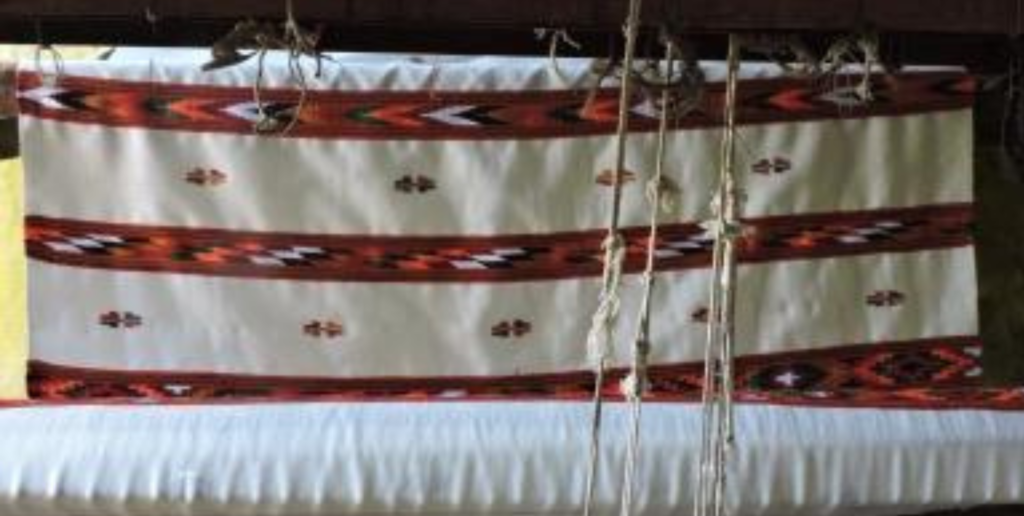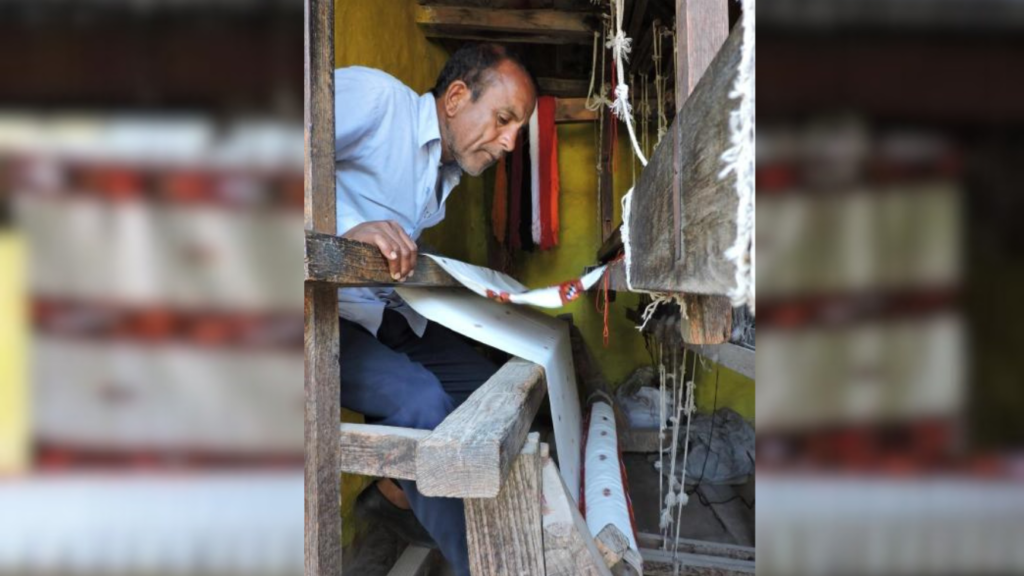
KULLU AUR KINNAUR KI SHAWLS – WOOLEN HANDLOOM CRAFT
QUICK OVERVIEW
Origin: Kullu, Himachal Pradesh
Products: Kullu and Kinnauri Shawls, Per Wool cloth for Himachali Jackets
Tools Used: Weaving Loom, Thread wheel, Needles
Craftsperson: Lakshman Ram

THE CRAFT
The high altitude climate of Himachal Pradesh, locally available wool from reared sheep and goat, and quality pashmina wool from Tibet, has made weaving and spinning important domestic industries in the state. Once popular in Pangna, this craft is slowly dying out unprofitable returns.
The chief products made by the few remaining craftsmen are Kullu and Kinnauri Shawls – characterised by the twill-woven body in the grey, off-white, fawn or brown shades of natural wool and the tapestry woven borders in multicoloured geometrical forms. These patterns and motifs have a variety of names like Patti, Phool and Mandir.
The shawls are woven from two types of thread – ruffle and cashmere – that are soft to the touch and sourced from local markets. Earlier a coarser, warmer wool – per wool – was used to weave simple shawls. But over the years, there has been a gradual shift to more pattern centered and colorful shawls. Per wool continues to be weaved into cloth, but only for the traditional Himachali jackets.
THE MAKING
Similar to any hand loom, the process begins with sourcing the threads and laying them out on the ground in order. The patterns are chosen, adjusted into the loom, and the threads are transferred accordingly. The weaver weaves in regular intervals, stopping to incorporate the intricate geometrical designs by hand. Once the product is finished, it is separated from the loom and cleaned before sale.

Laxman Ram at work on his loom, weaving a Kullu Shawl
THE CRAFTSMEN
Lakshman Ram is part of the third generation of hand loom weavers in his family. He grew up learning the craft from his maternal and paternal grandparents, and continued on his own from a young age. Lakshman has been weaving for the last 40 years and has conducted several training sessions in the surrounding regions. Most of his shawls are commissioned from past customers, especially during winter, while others selling big at Melas and exhibitions in cities like Delhi.
